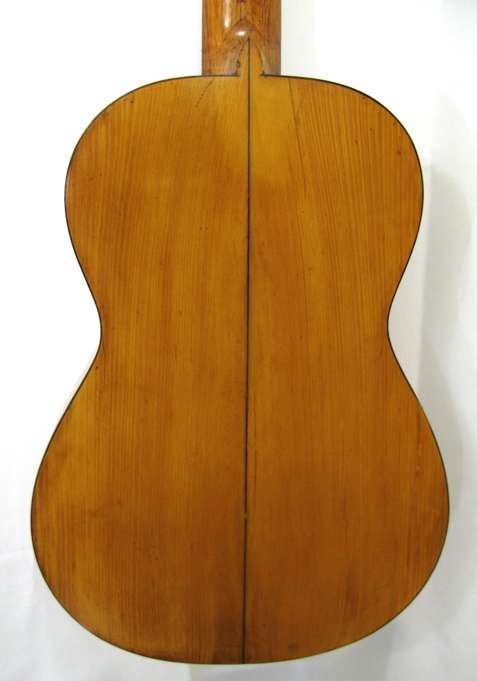1903 Manuel Ramirez
1903 Manuel Ramirez
Spanish Guitar
Make: Manuel Ramirez
Model: Spanish Guitar
Model Year: 1903
Top: German Spruce
Back & Sides: Spanish Cypress
Scale: 620mm
Nut: 48mm
Finish: French Polish
Tuners: Brass
Country: Spain
Condition: Used - Excellent
Manuel Ramirez (1864-1916) in his time was far more famous a guitar maker than was his brother, José Ramirez I (1858-1923), the founder of the Ramirez dynasty. Manuel trained a generation of great luthiers: Enrique Garcia, Santos Hernandez, Modesto Borreguero, and Domingo Esteso, and is also remembered for his gift of a fabulous guitar to a young Andrés Segovia in 1912. Manuel learned his craft from his brother José, who had been taught by Francisco González (c1818-c1880). In 1882, José and Manuel opened their workshop in the Rastro of Madrid, on Cava Baja-- a street that runs along what was the moot around the old city. Around 1890, Manuel decided to go out on his own. Initially, he said he was going to move to Paris as had José's pupil, Julian Gomez Ramirez (no relation). His brother, José, helped him make preparations, but instead of going to Paris, he opened a workshop on the Plaza de Santa Ana. José felt betrayed, and the rift this caused was so deep that they never spoke again. In 1893, Manuel won a medal at the Chicago Fair for his work. In 1897, Ramirez moved his shop to Arlabán 10; and, in 1911 to Arlabán 11, where it remained until the death of his widow in 1920. This little guitar was probably made some between 1897 and 1903, for by 1904 Manuel had been appointed as the luthier for the Royal Conservatory of Music in Madrid, a fact that afterwards he advertised on his labels. Although this spanish guitar has cypress back and sides, it was never used as a flamenco guitar. It has the machine heads that Ramirez used on his classical guitars, but it has a very shallow body, and short scale of 620mm. It weights almost nothing. The sound is amazing-- vibrant, full bodied, alive, with great volume. It is easy to see why flamenco players loved this sort of guitar.This guitar works just as well as a classical guitar, having wonderful tone. In fact, judging from the unmarred condition of the top, it has never been used as a flamenco instrument.





